
Borneo is the third-largest island in the world, with an area of 748,168 km2 (288,869 sq mi). Situated at the geographic centre of Maritime Southeast Asia, it is one of the Greater Sunda Islands, located north of Java, west of Sulawesi, and east of Sumatra.

North Borneo was a British protectorate in the northern part of the island of Borneo, which is present day Sabah. The territory of North Borneo was originally established by concessions of the Sultanates of Brunei and Sulu in 1877 and 1878 to a German-born representative of Austria-Hungary, a businessman and diplomat, Gustav Overbeck.
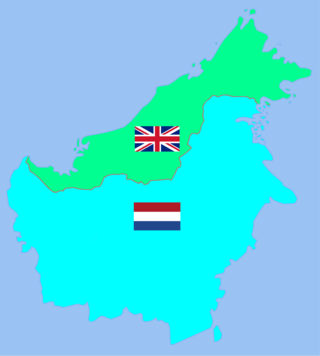
British Borneo comprised the four northern parts of the island of Borneo, which are now the country of Brunei, two Malaysian states of Sabah and Sarawak, and the Malaysian federal territory of Labuan. During the British colonial rule before World War II, Sarawak was known as the Raj of Sarawak (1841–1946), Sabah was known as North Borneo (1881–1946), and Labuan was known as the Crown Colony of Labuan (1848–1946). Between World War II and their independence from Britain, Sarawak became the Crown Colony of Sarawak (1946–1963) whereas Sabah and Labuan combined to form the Crown Colony of North Borneo (1946–1963). The Kingdom of Brunei (1888/1906–1984) was a protectorate of the United Kingdom since the 1888/1906 Protectorate Agreement, and was known as British Protectorate State of Brunei.

Eublemma is a genus of moths of the family Erebidae described by Jacob Hübner in 1829.

Homodes is a genus of moths of the family Erebidae first described by Achille Guenée in 1852.

Rectipalpula is a monotypic moth genus of the family Erebidae and subfamily Erebinae. It was seen as a synonym for Oxyodes, but is now considered a separate genus. Its single species, Rectipalpula billeti, is found in northern India, Vietnam, Thailand, Sundaland and Sulawesi. It is frequent over an altitude range from sea level to about 2000 m, the species has been recorded from forested, disturbed and cultivated areas. Both the genus and the species were first described by Joseph de Joannis in 1900.

Targalla is a genus of moths of the family Euteliidae. The genus was erected by Francis Walker in 1858.

Comostola is a genus of moths in the family Geometridae erected by Edward Meyrick in 1888. They are found primarily in Asia and Australia.
Idiochlora is a genus of moths in the family Geometridae. The genus was described by Warren in 1896.

Plutodes is a genus of moths in the family Geometridae erected by Achille Guenée in 1857.
Plecoptera quaesita is a species of moth of the family Noctuidae. It is found in India, Sri Lanka, Burma, Andamans, Borneo, Northern Moluccas and Australia.

Trigonodes hyppasia, the triangles or semi-looper, is a moth in the family Erebidae. The species was first described by Pieter Cramer in 1779. It is largely cosmopolitan, found throughout Borneo, Fiji, India, Maldives, Nepal, Sri Lanka, São Tomé and Príncipe, Taiwan, Thailand, Zimbabwe, northern Australia, and almost all African countries.
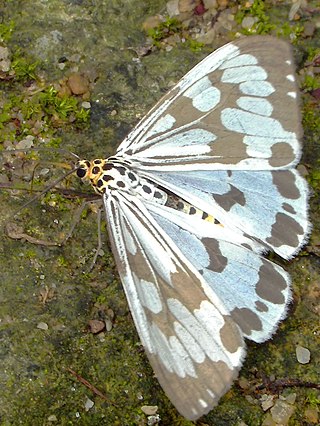
Nyctemera adversata, the marbled white moth, is a moth of the family Erebidae first described by Johann Gottlieb Schaller in 1788. It is found in Sri Lanka, Bangladesh, India, Nepal, Myanmar, China territories like Tibet, Sichuan, Yunnan, Guangdong, Hong Kong, Hainan, Guangxi, Hunan, Henan, Zhejiang, Jiangxi, Fujian, Taiwan, Japan, Peninsular Malaysia, Thailand, Indonesia Philippines.
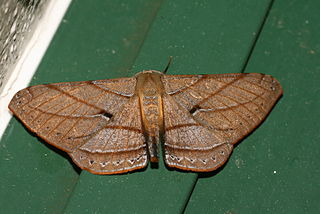
Dalima patularia is a moth of the family Geometridae. It is found in the Himalaya, northern Thailand, western China, Borneo, Sumatra and Sulawesi.

Neochera inops is a moth in the family Erebidae. It is found from the north-eastern Himalaya to Sundaland and Palawan, including Bangladesh (Silhet), China, India, Indonesia (Borneo), Laos, Malaysia, Myanmar, the Philippines, Sikkim, Thailand and northern Vietnam.
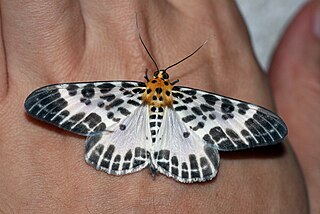
Pogonopygia nigralbata is a moth of the family Geometridae. It is found in Peninsular Malaysia, Sumatra, Borneo, Japan, the north-eastern Himalaya, northern Vietnam and Luzon.

Ecliptopera rectilinea is a species of moth of the family Geometridae first described by William Warren in 1894. It is found in the north-eastern parts of the Himalayas, Taiwan, northern Thailand, Peninsular Malaysia, Borneo, Bali, Sumbawa and Sulawesi.
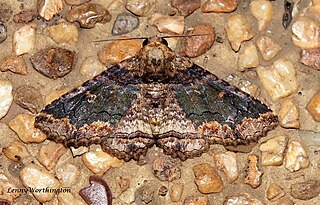
Pericyma cruegeri, the poinciana looper, is a moth of the family Erebidae. The species was first described by Arthur Gardiner Butler in 1886. It is found in south-east Asia including Hong Kong, Taiwan, Vietnam, Thailand, Sumatra, Peninsular Malaysia, Borneo, the Philippines, New Guinea, and in Australia, northern New South Wales and Queensland. Furthermore, it is an introduced species in Hawaii and Guam, where it was first detected in 1971. In Japan, it was first detected in 1986 in Ishigaki Island and the living area is expanded to Okinawa Island by 2000.

Lymantriini is a tribe of moths of the family Erebidae. This tribe is a group of polyphagous moths that reside mostly in the tropical regions of Afro-Eurasia but also North America.
Scopula adeptaria is a moth of the family Geometridae. It was described by Francis Walker in 1861. It is found in Sri Lanka, India, Taiwan, Hainan, southern Myanmar, Peninsular Malaysia, Borneo, the Philippines, Sumba and northern Australia.

















